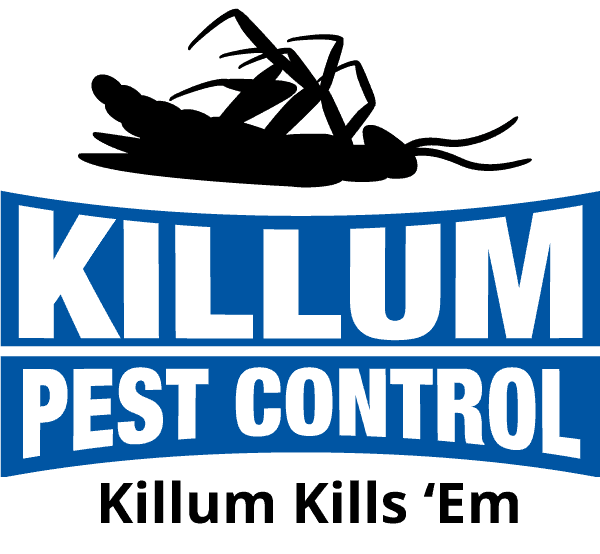One of the most critical aspects of operating a successful restaurant is keeping the space clean, inviting, and free of pests. A pest infestation can lead to severe consequences for your establishment, such as tainted food, health code violations, or a damaged reputation. To successfully prevent or mitigate pest issues, restaurant owners must know the most common pests in Texas eateries and the best practices to control their presence.
As a leading provider of residential and commercial pest control services in the Texas Gulf Coast region, Killum Pest Control is committed to helping restaurants address their unique pest control challenges. In this comprehensive guide, we offer our expert knowledge and best practices to help restaurants maintain a clean, pest-free environment, allowing owners and managers to focus on providing exceptional food and service to their customers.
1. Common Pests in Texas Restaurants: Know Your Enemies
Effective pest control starts with understanding the pests that are likely to invade Texas restaurants and the risks they pose in a foodservice environment:
– Rodents: Mice and rats are notorious for carrying diseases and contaminating food, posing significant threats to your restaurant’s sanitation and health standards. Key indicators of rodent infestations include gnaw marks, droppings, and nests.
– Flies: As carriers of pathogens, flies can spread foodborne illnesses and put your customers’ health at risk. Watch for fly activity in food preparation areas or near waste disposal locations.
– Cockroaches: With their penchant for spreading germs and bacteria, cockroaches in your restaurant can compromise food safety and hygiene. Keep an eye out for their droppings, shed skins, or unpleasant odors.
2. Maintaining Food Storage and Sanitation: Building a Strong Defense
Proper food storage and sanitation practices form the foundation of your restaurant’s defense against pest infestations:
– Food Storage: Store all food items in airtight containers and off the ground to limit access for pests. Use a first-in, first-out (FIFO) inventory system for perishable products to prevent spoilage and pest attraction.
– Waste Management: Promptly remove trash and clean dumpsters or garbage bins regularly to mitigate the risk of pests being drawn to the area. Establish a routine schedule for waste disposal and educate staff about proper sanitation practices.
– Cleaning and Maintenance: Dedicate resources to maintaining a clean work environment, with a focus on areas prone to pest activity, such as kitchens, storage spaces, and dining areas. Ensure that staff members are diligent in carrying out cleaning tasks and adhering to best practices.
3. Implementing Integrated Pest Management (IPM): A Holistic Approach
Adopting an Integrated Pest Management (IPM) approach can help Texas restaurants proactively address pest control challenges while minimizing their environmental impact:
– Inspection and Monitoring: Regularly inspect your restaurant for signs of pest infestations and track any observed activity. Early detection can prevent small issues from escalating into severe infestations.
– Exclusion Techniques: Implement preventive measures, such as sealing cracks or gaps and installing door sweeps or screens, to deter pests from entering your establishment.
– Biological and Chemical Control: Use environmentally responsible pest control methods, like biological controls or targeted pesticides, to complement preventive measures and address any identified pest issues.
– Evaluation: Continually assess the efficacy of your IPM strategies and adjust as needed to ensure your restaurant stays ahead of evolving pest control challenges.
4. Partnering with a Professional Pest Control Provider: Expert Support for a Pest-Free Restaurant
Collaborating with a trusted pest control provider like Killum Pest Control lends several advantages to your restaurant’s pest management approach:
– Tailored Pest Control Solutions: A professional pest control provider will assess your restaurant’s specific needs and develop a customized pest management plan that encompasses inspection, prevention, and remediation strategies.
– Expertise and Experience: Pest control providers dedicated to the foodservice industry understand the unique challenges faced by restaurants and have the expertise to address pest issues effectively while upholding health and safety standards.
– Ongoing Support: With a trusted pest control partner, your restaurant can benefit from proactive monitoring, scheduled maintenance, and prompt responses to any emerging issues.
Conclusion
Maintaining a pest-free restaurant is essential for ensuring a safe and enjoyable dining experience for your customers and keeping your establishment compliant with health regulations. By understanding the common pests that pose risks to Texas eateries, implementing effective food storage and sanitation practices, adopting Integrated Pest Management strategies, and partnering with a professional pest control provider, you can safeguard your restaurant from disruptive pest infestations and focus on delighting your patrons with exceptional culinary experiences.
Killum Pest Control is a leading provider of residential and commercial pest control services throughout the Texas Gulf Coast region. Our expertise in the foodservice industry allows us to offer tailored solutions and guidance on pest management for restaurants in our service area. Don’t let pests impact your restaurant’s reputation or bottom line – get in touch with Killum Pest Control today to start developing a comprehensive, effective pest control strategy for your Texas eatery.




